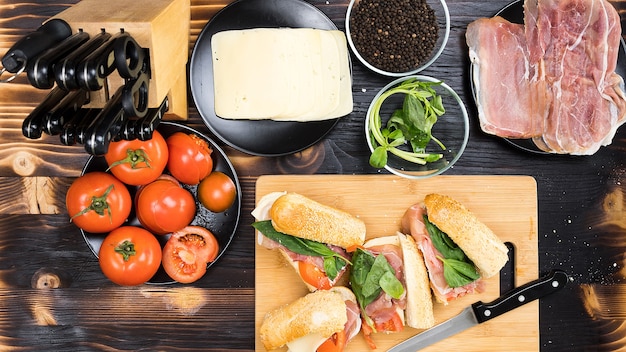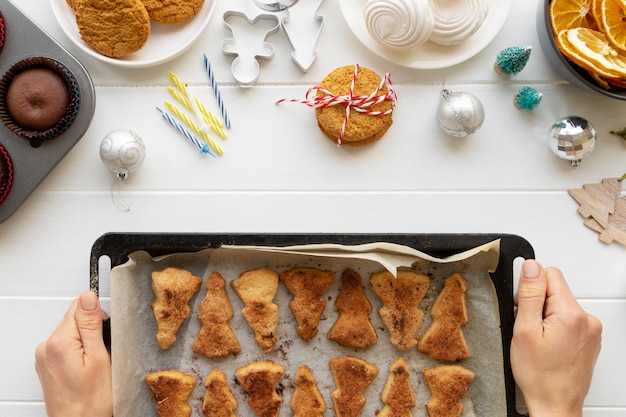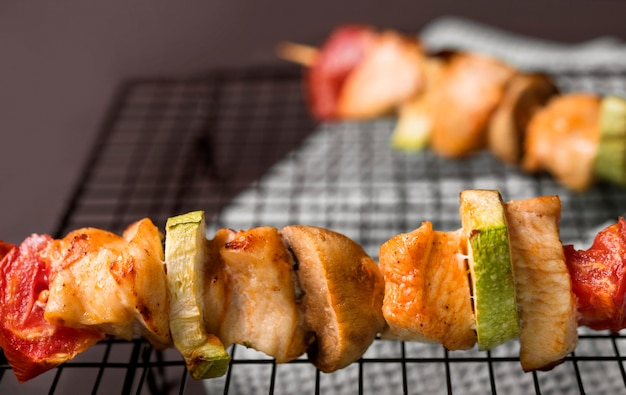What is a Bratwurst, Anyway?
Let's start with the basics, shall we? A bratwurst, for those unfamiliar, is a type of german sausage. Usually made with pork, it can also include beef or veal, and it's seasoned with a blend of spices that are absolutely heavenly. Think marjoram, caraway seeds, and sometimes even garlic or nutmeg. It's all about that perfect balance of flavours – savory, slightly sweet, and just a hint of spice – creating a flavor profile that's both complex and comforting. Trust me, you'll be hooked on the first bite.
Choosing the Right Bratwurst
Now, the world of bratwurst can be a bit overwhelming. You've got your basic supermarket varieties and then you've got those gourmet, artisan sausages made with fancy ingredients. My advice? Go for quality. You want a bratwurst made with fresh, high-quality meat and a good blend of spices. How can you tell? Look for a vibrant colour, a firm, plump texture, and most importantly, a meaty aroma that'll make your mouth water.
And let's not forget the casing, which holds the sausage together. There are two main types: natural casing and artificial casing. Natural casing, made from animal intestines, gives the bratwurst a more authentic flavour and a slightly chewy texture. Artificial casing, usually made from collagen, is smoother and more uniform. Personally, I prefer natural casing. It adds a bit more character and texture to the sausage, but it's really down to personal preference. Choose what you like!
Understanding the Different Types of Bratwurst
Now, you're probably thinking, "Okay, I want a good bratwurst, but which one should I get?" Well, here's a rundown of some of the most popular types:
- Traditional Bratwurst: This is the classic bratwurst, made with pork, veal, or a blend of both. It's seasoned with marjoram, caraway, and sometimes nutmeg. It's a versatile bratwurst that can be grilled, pan-fried, or boiled.
- Thuringer Bratwurst: A type of bratwurst that originated in Thuringia, Germany. It's typically made with pork, veal, and bacon, and it's seasoned with marjoram, caraway, and salt. It's known for its juicy texture and its slightly smoky flavour.
- Weisswurst: A Bavarian bratwurst made with veal and pork, often with a touch of lemon and parsley. It has a delicate, creamy flavour and is traditionally served boiled in a light broth.
- Nürnberger Bratwurst: These are small, thin bratwursts from Nuremberg, Germany. They're made with pork, veal, and spices, and they're usually served in pairs with sauerkraut and mustard.
(Part 2) The Art of Grilling Brats

Getting Your Grill Ready
Alright, let's move on to the fun part – grilling! There's nothing quite like the aroma of bratwursts sizzling over a hot grill. The key to grilling perfect brats is all about temperature control. You want a medium-high heat, around 400-450°F (200-230°C). This will create those beautiful grill marks and ensure your brats cook evenly without burning.
If you're using a gas grill, preheat it for about 10 minutes. For charcoal grills, make sure the coals are glowing red and covered in a light layer of ash before you start grilling.
The Grilling Process: Step by Step
Okay, so your grill is hot, your brats are ready to go, and your stomach is rumbling – let's get grilling! Here's the breakdown:
- Place the brats on the grill: I prefer grilling over direct heat, but if you're concerned about burning, you can move them to an indirect heat zone towards the end of the cooking time.
- Don't overcrowd the grill: Give your brats space to cook evenly. Overcrowding the grill will slow down the cooking process and risk steaming the brats instead of grilling them.
- Turn those brats: Don't be shy about turning your brats regularly. It will help them cook evenly and develop those fantastic grill marks. Rotate them every few minutes or so, making sure to get all sides nice and brown.
- The golden rule: The brats are done when they reach an internal temperature of 155°F (68°C). You can use a meat thermometer to check the temperature. If you don't have a thermometer, check the brats by poking them with a knife or a fork. If the juices run clear and the bratwurst is firm to the touch, they're done.
Pro Tips for Grilling Perfection
Here are a few pro tips to help you grill like a pro:
- Don't pierce the brats: When you pierce the brats, you let out all that delicious juice. Resist the temptation and let those brats cook undisturbed.
- Keep the lid closed: Keeping the lid closed helps to trap the heat and smoke, giving your brats that amazing flavour.
- Use a grill brush: Before you start grilling, give your grill grates a good scrub with a grill brush. This will remove any leftover food and prevent your brats from sticking.
- Don't overcook the brats: You want your brats to be juicy and tender, not dry and tough. Keep a close eye on them and don't overcook them.
(Part 3) Beyond the Grill

Alternative Cooking Methods
Alright, while grilling is the classic method for brats, it's not the only way to cook a delicious bratwurst. Here are a few alternatives you can explore:
- Pan-frying: Heat a skillet over medium-high heat and add a little oil. Add the brats and cook for about 8-10 minutes, turning them regularly to ensure they cook evenly. This method is perfect for when you don't have a grill, or when you're looking for a quick and easy way to cook them.
- Boiling: Boil water in a large pot. Add the brats and simmer for about 10-15 minutes. This method is often used as a pre-cooking step for brats that will be grilled or pan-fried later, as it helps to ensure they cook evenly and prevents them from bursting.
- Baking: Preheat your oven to 375°F (190°C). Place the brats on a baking sheet lined with parchment paper and bake for about 20-25 minutes. This is a good option if you don't want to use the grill, but it won't give you those beautiful grill marks.
Cooking with Different Flavors
Now, you've got the basics down, but what about adding some personality to your brats? Well, the beauty of bratwurst is that they're so versatile! You can add all sorts of flavour combinations to make them even more delicious. Here are a few ideas:
- Spicy: Add some chili powder, cayenne pepper, or chipotle powder to your brats for a kick of heat.
- Sweet and Smoky: Add a little brown sugar, smoked paprika, or maple syrup to your brats for a sweet and smoky flavour.
- Citrusy: Add some lemon zest, orange zest, or lime juice to your brats for a refreshing citrusy flavour.
- Herby: Add some fresh or dried herbs like thyme, rosemary, or oregano to your brats for a fragrant and flavorful twist.
Don't be afraid to experiment! You can even try making your own bratwurst at home. There are plenty of recipes available online. Just remember, the most important thing is to have fun and enjoy the process.
(Part 4) The Perfect bratwurst sides

Sauerkraut: The Classic Companion
No bratwurst experience is complete without a generous helping of sauerkraut. It's the perfect balance to the richness of the sausage, offering a tangy, slightly sour counterpoint that really elevates the flavour. There are two main types of sauerkraut: German sauerkraut and American sauerkraut. German sauerkraut is made with finely shredded cabbage, while American sauerkraut is made with larger, coarser shreds. Personally, I prefer German sauerkraut, as it has a more delicate flavour.
You can buy sauerkraut pre-made, or you can make your own. There are plenty of recipes available online. But no matter which kind you choose, make sure you warm it up before serving it with your brats.
Mustards: A World of Flavour
Now, let's talk about mustard. Mustard is a must-have for any bratwurst lover, and there are so many different kinds to choose from, each with its own unique flavour profile. Here are a few of my favourites:
- Yellow Mustard: The classic choice for bratwursts, yellow mustard provides a tangy, slightly sweet flavour. It's a versatile mustard that goes well with any type of bratwurst.
- Stone-ground Mustard: A more intense mustard with a slightly peppery flavour, stone-ground mustard adds a bit of a kick to your brats.
- Dijon Mustard: Made with white wine and black peppercorns, Dijon mustard has a bold, pungent flavour that is perfect for adding a touch of sophistication to your brats.
- Honey Mustard: A sweet and tangy mustard, honey mustard is perfect for those who prefer a slightly sweeter flavour. It's especially good with grilled brats.
My advice? Don't be afraid to experiment with different mustards to find your favourite combination.
Other Delicious Sides
Of course, there's more to life than sauerkraut and mustard. Here are a few other delicious sides that pair perfectly with bratwursts:
- potato salad: A classic picnic side, potato salad is creamy, refreshing, and perfect for soaking up all the juices from your brats.
- Coleslaw: Another classic, coleslaw is a crunchy, tangy side that adds a welcome contrast to the richness of the sausage.
- Baked Beans: A sweet and smoky side that goes perfectly with grilled brats.
- corn on the cob: A summery side that's perfect for grilling alongside your brats.
- Macaroni Salad: A creamy and cheesy side that's always a crowd-pleaser.
The options are endless, so get creative and have fun with it!
(Part 5) bratwurst recipes to Delight Your Taste Buds
The Ultimate grilled bratwurst Recipe
Here's my go-to recipe for grilling the perfect bratwurst:
Ingredients:
- 1 pound bratwurst (natural casing preferred)
- 1 tablespoon olive oil
- 1/2 teaspoon salt
- 1/4 teaspoon black pepper
- 1/4 teaspoon garlic powder
- 1/4 teaspoon onion powder
- 1/4 cup chopped fresh parsley
- 1/4 cup chopped fresh cilantro
- Sauerkraut (warmed)
- Mustard (your favourite kind)
Instructions:
- Preheat your grill to medium-high heat (400-450°F/200-230°C).
- Brush the brats with olive oil.
- Season the brats with salt, pepper, garlic powder, and onion powder.
- Place the brats on the grill and cook for about 10-12 minutes, turning them every few minutes to ensure they cook evenly.
- Remove the brats from the grill and let them rest for a few minutes before serving.
- Serve with warm sauerkraut and your favourite mustard.
Bratwurst with caramelized onions and Apples
For a more sophisticated twist, try this recipe for bratwurst with caramelized onions and apples:
Ingredients:
- 1 pound bratwurst (natural casing preferred)
- 1 tablespoon olive oil
- 1 large onion, thinly sliced
- 2 apples, cored and thinly sliced
- 1/4 cup brown sugar
- 1/4 cup apple cider vinegar
- 1/4 teaspoon salt
- 1/4 teaspoon black pepper
- 1/4 cup chopped fresh parsley
- 1/4 cup chopped fresh thyme
Instructions:
- Preheat your grill to medium-high heat (400-450°F/200-230°C).
- In a large skillet, heat the olive oil over medium heat. Add the onion and cook until softened and lightly browned, about 5-7 minutes.
- Add the apples, brown sugar, apple cider vinegar, salt, and pepper. Cook, stirring occasionally, until the apples are softened and the mixture is slightly thickened, about 5-7 minutes.
- Place the brats on the grill and cook for about 10-12 minutes, turning them every few minutes to ensure they cook evenly.
- Remove the brats from the grill and serve with the caramelized onions and apples. Garnish with chopped parsley and thyme.
(Part 6) Bratwurst Beyond the Barbecue
Beyond the BBQ: Exploring New Possibilities
Now, I know, brats and barbecues are practically synonymous, but let's get creative! Bratwurst can be much more than just a summertime grilling staple. They're incredibly versatile and can be incorporated into all sorts of delicious dishes.
Bratwurst in Sandwiches
First up, let's talk about sandwiches! They're a classic for a reason. You can use grilled or pan-fried bratwurst, and get creative with your toppings. Here are a few ideas:
- The Classic Bratwurst Sandwich: Grilled bratwurst on a toasted bun with sauerkraut, mustard, and diced onion.
- The Chicago-Style Bratwurst: Grilled bratwurst on a poppy seed bun with yellow mustard, sweet relish, chopped white onions, tomato wedges, sport peppers, and a dill pickle spear.
- The Bratwurst with Caramelized Onions and Apples: Grilled bratwurst on a toasted bun with caramelized onions, apples, and a drizzle of honey mustard.
- The Bratwurst with Blue Cheese and Cranberry Sauce: Grilled bratwurst on a toasted bun with crumbled blue cheese, cranberry sauce, and chopped walnuts.
Bratwurst in Other Dishes
Now, think beyond the sandwich. Bratwurst can be incorporated into all sorts of dishes, adding a delicious, meaty flavour to soups, stews, salads, and more!
- Bratwurst Soup: A hearty and satisfying soup made with bratwurst, potatoes, onions, carrots, and broth.
- Bratwurst and Sauerkraut Stew: A comforting stew made with bratwurst, sauerkraut, potatoes, onions, and broth.
- Bratwurst Salad: A simple salad made with grilled bratwurst, sliced red onion, bell peppers, and a vinaigrette dressing.
- Bratwurst Pizza: A delicious pizza topped with bratwurst, sauerkraut, and mustard.
(Part 7) The Art of Serving
Table Setting and Ambience
Alright, you've got the delicious brats, the perfect sides, and the amazing recipes – now it's time to think about presentation. You want your bratwurst feast to look as good as it tastes, right? Here are a few tips:
- Choose a vibrant table setting: Think red and white checkered tablecloths, colourful napkins, and fun plates.
- Set the mood: Play some upbeat music, hang some festive lights, and enjoy the company of your loved ones.
Layering the Flavors
You want to make sure each element of your bratwurst spread complements each other. Here's the secret: layering flavours!
- Start with the base: Your delicious bratwurst is the star of the show.
- Add the tang: Next comes the sauerkraut, offering a welcome contrast to the richness of the sausage.
- The punch: Mustard is next, adding a punch of flavour and a touch of heat.
- Sides: Your potato salad, coleslaw, or baked beans will bring a refreshing contrast to the meal.
Don't Forget the Drinks!
Now, you can't forget about the drinks. Here are a few options that pair perfectly with bratwursts:
- Beer: A classic choice for bratwurst, choose a light lager, a pilsner, or even a wheat beer.
- White Wine: A crisp, dry white wine like Riesling or Sauvignon Blanc can also pair well with bratwurst.
- Apple Cider: A refreshing and slightly sweet option that complements the flavours of the bratwurst.
Remember, the most important thing is to have fun and enjoy the experience!
(Part 8) FAQs
1. How do I know if a bratwurst is cooked through?
You can tell if a bratwurst is cooked through by checking the internal temperature with a meat thermometer. The internal temperature should reach 155°F (68°C). You can also check the brats by poking them with a knife or a fork. If the juices run clear and the bratwurst is firm to the touch, they're done.
2. Can I cook bratwursts in the oven?
Yes, you can cook bratwursts in the oven. Preheat your oven to 375°F (190°C). Place the brats on a baking sheet lined with parchment paper and bake for about 20-25 minutes. This method won't give you those beautiful grill marks, but it's a good option if you don't want to use the grill.
3. What's the best way to store bratwursts?
The best way to store bratwursts is in the refrigerator. They should be kept in the original packaging or wrapped tightly in plastic wrap. Bratwursts can be stored in the refrigerator for up to 3-4 days.
4. Can I freeze bratwursts?
Yes, you can freeze bratwursts. To freeze them, wrap them tightly in plastic wrap or aluminum foil. They can be frozen for up to 2-3 months. To thaw frozen bratwursts, place them in the refrigerator overnight.
5. What are some other ways to enjoy bratwurst?
Besides grilling, pan-frying, and baking, you can also enjoy bratwurst in soups, stews, salads, pizzas, and more. They're incredibly versatile and can be incorporated into all sorts of delicious dishes.
There you have it! The ultimate guide to cooking delicious brats. So, grab your grill, your favourite sides, and your favourite beverage, and get ready for a delicious bratwurst feast! Happy grilling!
Everyone is watching

How to Cook Frozen Lobster Tails Perfectly: A Step-by-Step Guide
RecipesLobster. Just the word conjures up images of lavish meals, special occasions, and a taste of luxury. But let's...

Pigs in a Blanket Cooking Time: How Long to Bake for Perfect Results
RecipesAh, pigs in a blanket. Just the name conjures up images of those delightful little parcels of crispy pastry en...

Pork Fillet Cooking Time: How Long to Cook It Perfectly
RecipesPork fillet, or tenderloin as it's sometimes called, is a real favourite in our house. It's so versatile, and...

The Ultimate Guide to Cooking Delicious Frankfurters
RecipesLet's face it, we all love a good frankfurter. It's a classic, simple, and always satisfying. But let's be rea...

Wolf Meat Recipes: A Guide to Cooking Wild Game
RecipesLet's be honest, you don't see wolf meat at your local butcher shop every day. It's a bit of a wild card, but ...
